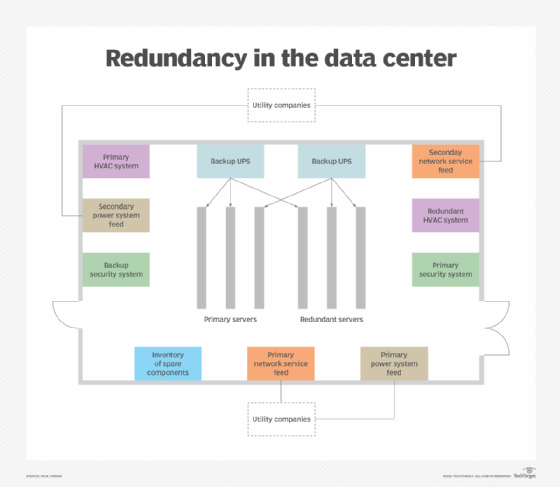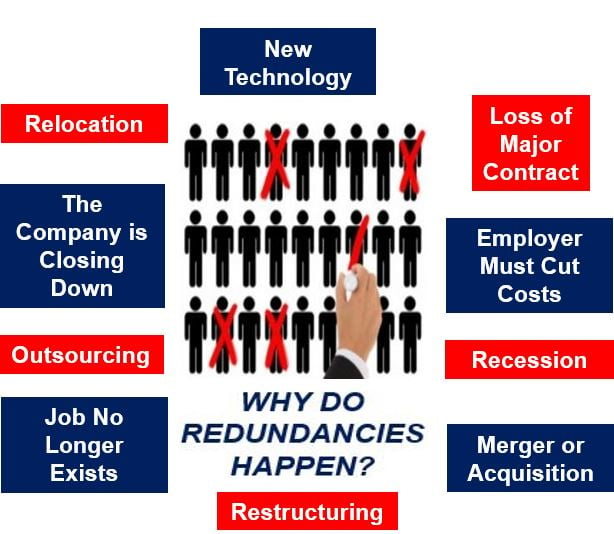How to Deal With Redundancy Pay If Company Goes Bust: Secret Details for UK Workers
How to Deal With Redundancy Pay If Company Goes Bust: Secret Details for UK Workers
Blog Article
Checking Out the Operational Characteristics of Company Redundancy and Its Long-Term Sustainability

Redundancy Techniques for Company Continuity
In order to make certain nonstop operations, services should execute efficient redundancy techniques for business connection. Redundancy in this context refers to the duplication of essential parts or functions within a system to reduce the effect of potential failings. By integrating redundancy techniques, organizations can improve their strength versus disruptions brought on by numerous factors such as all-natural disasters, equipment failings, or cyber-attacks.
One typical redundancy technique is the execution of back-up systems and data storage space options. This involves creating duplicates of essential data and systems that can be triggered in situation of a key system failure. In addition, companies can develop redundant communication networks and source of power to preserve connectivity and operations during unexpected events.
Moreover, cross-training employees to do numerous roles within the business can work as a useful redundancy approach. This guarantees that essential jobs can still be accomplished also if crucial employees are not available because of health problem or various other reasons. In general, effective redundancy techniques are crucial for organizations to maintain functional connection and reduce the influence of prospective disruptions.
Effect of Redundancy on Organizational Strength
Offered the important role redundancy methods play in guaranteeing business continuity, exploring the effect of redundancy on organizational durability comes to be important for recognizing the alternative functional dynamics of a business. Redundancy, when tactically carried out, can substantially add to enhancing a company's resilience in the face of unforeseen difficulties.
Furthermore, redundancy can cultivate technology and imagination within a company as staff members feel empowered to take calculated risks, knowing that there is a safety web to support them in case of failure. Overall, the impact of redundancy on organizational strength is extensive, shaping the lasting sustainability and success of a company.
Stabilizing Effectiveness and Flexibility in Redundancy
Accomplishing a harmonious balance between operational effectiveness and adaptive versatility is a crucial obstacle in the tactical release of redundancy within companies. Efficient operations are crucial for maintaining efficiency and cost-effectiveness, making certain that sources are used ideally. Nevertheless, too much focus on performance alone can cause rigidity, making it tough for organizations to adapt to unforeseen adjustments or obstacles. On the various other hand, versatility allows organizations to react nimbly to advancing situations, fostering innovation and durability. Yet, way too much adaptability without a solid functional foundation can result in inadequacies and variance.
To balance efficiency and flexibility in redundancy planning, companies need to very carefully examine their operational needs, market dynamics, and critical goals. Carrying out lean practices can improve effectiveness by eliminating and streamlining processes waste, while fostering a society of adaptability and continuous enhancement can increase flexibility. Furthermore, spending in cross-training programs and durable interaction channels can aid grow a functional labor force with the ability of handling diverse jobs throughout durations of transition. Ultimately, locating the ideal balance in her explanation between performance and adaptability is vital for developing a resilient and sustainable organization in the face of unpredictability.
Long-Term Sustainability Via Redundancy Planning
To make certain enduring practicality and stability, companies need to strategically align their redundancy preparation with long-lasting sustainability objectives, thereby balancing operational effectiveness with flexible adaptability. Companies must watch redundancy not as a responsive solution to prompt troubles but as an aggressive approach for long-term success.

Aggressive Actions for Lasting Business Procedures
Exactly how can firms proactively enhance their operational sustainability for long-term success? Implementing proactive steps is crucial for business aiming to make sure lasting operations. One vital method is to purchase technology and advancement to streamline procedures, decrease waste, and stay competitive on the market. Adopting lasting methods such as lowering energy consumption, lessening carbon impact, and optimizing source usage can not only benefit the environment however also lead to cost savings over time.
Furthermore, promoting a culture of continuous improvement and discovering within the company can improve flexibility to altering market conditions and client needs. Encouraging employee involvement in decision-making procedures and offering chances for professional additional hints development can enhance spirits, performance, and overall performance. Establishing clear objectives, monitoring essential performance indicators, and regularly reviewing development are essential components of aggressive sustainability monitoring.
Working together with vendors, clients, and other stakeholders to promote lasting methods throughout the supply chain can produce a surge result of favorable effect - redundancy pay if company goes bust. By taking proactive actions towards operational sustainability, companies can develop resilience, drive development, and secure their lasting success in an ever-evolving service landscape
Conclusion

In the world of organizational administration, the critical implementation of firm redundancy stands as a pivotal yet detailed method that necessitates a fragile equilibrium between operational effectiveness and lasting feasibility. By dissecting the operational characteristics that underpin business redundancy and evaluating its more comprehensive ramifications for organizational strength and flexibility, a nuanced understanding of how redundancy techniques can shape the future trajectory of a company starts to unravel.Provided the important function redundancy methods play in guaranteeing service continuity, exploring the influence of redundancy on business strength ends up being necessary important source for understanding the alternative functional dynamics of a company. Overall, the effect of redundancy on business durability is extensive, forming the long-term sustainability and success of a company.
In final thought, recognizing the operational characteristics of company redundancy is critical for ensuring long-lasting sustainability.
Report this page